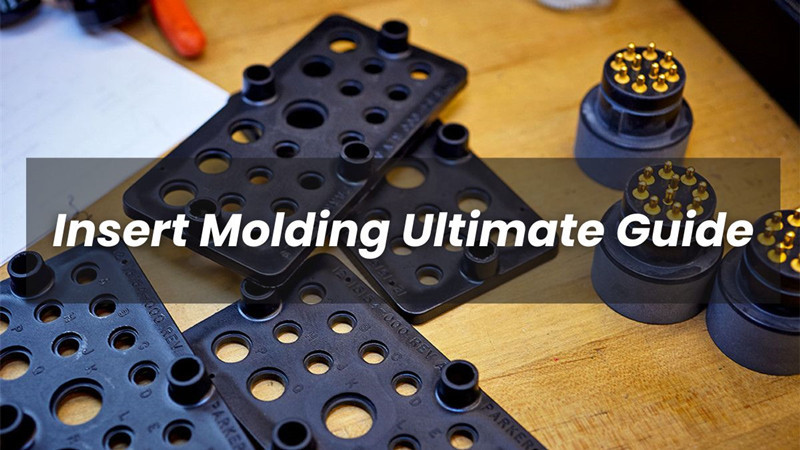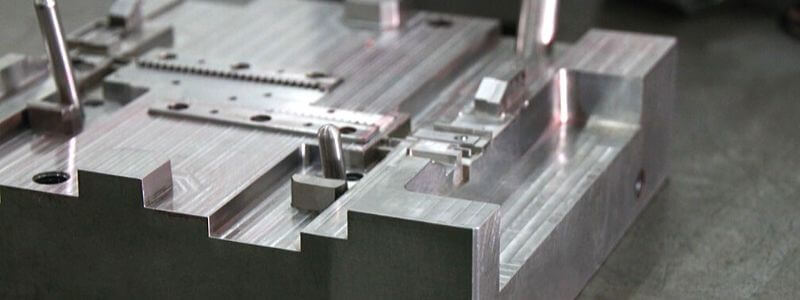The most essential key to a successful insert molding operation is your design preparation. Various aspects play a vital role in your insert molding operation. Configuring these aspects in your insert molding design can minimize failure rates in your production. These optimizations in design for insert molding will apply to both the inserts and the molds.
Here are the key factors to consider when optimizing the design for insert molding

Use Metal Bonding
Using a metal insert requires bonding between metal and plastic materials to make it successful. Metal bonding is an essential technique in insert molding. It allows finding the compatibility between the metal insert and the plastic molding materials. You will not have the perfect production results for your molded components without metal bonding.
Metal bonding keeps the plastic materials working well with the metal insert in insert molding. The result will be an easy, smooth molding and ejection process for the manufactured components. Consider this compatibility factor between materials before designing your inserts.
Design For Insert Molding: Draft Angle Optimization
Draft angle is something you need to optimize for insert molding. In insert molding, the draft angle will contribute to the moldability factor. Optimizing the draft angle for your insert will smoothen the ejection of the molded component. An unoptimized draft angle can damage the molded component during the plastic injection molding or ejection operation.
Poor draft angle design can also delay your production process in some ways. The molded component might get stuck during ejection and contribute to a halt in production. This issue can also bring more sizable production expenses.
Use High-Strength Resins
High-strength resins will provide the durability factor for a successful insert molding operation. Also, it is perfect for designing an insert because of its impact and high-temperature resistance. The higher the resin strength, the more suitable it will be for intense insert-molding operations.
Insert molding requires a constant cycle of molding and ejection process. High-strength resins offer the best durability and toughness for the insert metal. It allows the insert to handle the molding and ejection process better during production. It lowers the potential for you to replace the damaged inserts during use.
Design For Insert Molding: Size Consideration
Sizing is also essential for your insert molding success. Consider the mold size you are using. The insert molding size should be proportional to the mold size. Not too small and not too big for the mold. Disproportional sizing for your insert molding will create a disproportional shape for your molded component.
An insert that is too small for the mold can create sink marks on the molded component. A more sizable insert metal for the mold can cause cracks in the molded component.
No Sharp Corners
Sharp corners are bad news for your insert molding design. Avoid sharp corners at all costs in insert molding. Sharp corners can contribute to the difficulty during the ejection process of your molded parts. It can also contribute to potential defects and cracks. A sharp corner design can cause trapped air inside the mold. It can disturb the liquid flow of the injection molding material.
Sharp corners can also contribute to poor molding operations. You will mess up the mold operations around the high-temperature environments. The sharp corner shape might get degraded over time, giving you a poor-quality molded component.
Design For Insert Molding: Boss Diameter Consideration
Components that require the use of screw bosses will need inserts with properly-adjusted boss diameters. Without the adjustment in boss diameter, you might have an issue during molding operations. Avoid using the screw boss with a poor boss diameter for your molded components. It can help you prevent problems during the assembly process.
The best boss diameter should be 1.5x larger than the diameter of the insert. Apply a larger boss diameter for the inserts after the initial molding process. It should give enough room for the boss screw to lock the molded component later.
Wall Thickness
Thin walls in your insert molding components can lead to cracking or breaking during the cooling-down process. Uneven wall thickness throughout the insert will also cause the same problems. So, apply a uniform wall thickness for your inserts or mold components. It can ensure the best result for your molded component production.
The uniform and thick walls around the insert can give you an enormous advantage. This configuration can almost guarantee the prevention of any physical defects in your production. Always consider the wall thickness aspect in your insert molding design.
Use Rounded Knurling
Applying rounded knurling for the inserts will benefit the overall injection molding operation. Rounded knurling in your insert molding design can reduce the stress of the mold. It softens the metal insert pressure on the mold. It goes hand-in-hand with avoiding sharp corners. The rounded knurling design can help accommodate the load on the mold walls during production.
Rounded knurling will also help smoothen the mold ejection after completing the cooling-down process. You can remove the knurled inserts and molded components from the mold more easily.
Design For Insert Molding: A Proper Use of Undercuts
Creating undercuts will add more complexity to your insert molding design. This process can also add more costs to your production. However, the undercut feature is beneficial to help control the mold ejection process during production. Too many undercuts might defeat the purpose of having it in the first place.

With insert molding, it's best to use undercuts properly. The insert molding process already adds more complexity to the regular injection molding operation. Minimizing the use of undercuts can be advantageous to keep the insert molding process simple. However, ensuring the undercuts can keep the ejection process secure and under control is best. Use undercuts only to create a durable locking mechanism.
Conclusion
Consider these key factors when you design for insert molding. Optimizing your insert molding design is necessary to eliminate any potential failures in your production. Each design aspect can help you shape the best inserts for your molds. Minimizing the design failures in insert molding can help you run an efficient production operation. It can also help avoid unnecessary expenses.
Contact TEAM MFG at ericchen19872017@gmail.com today to get a free quote and strong desgin supports now!





















